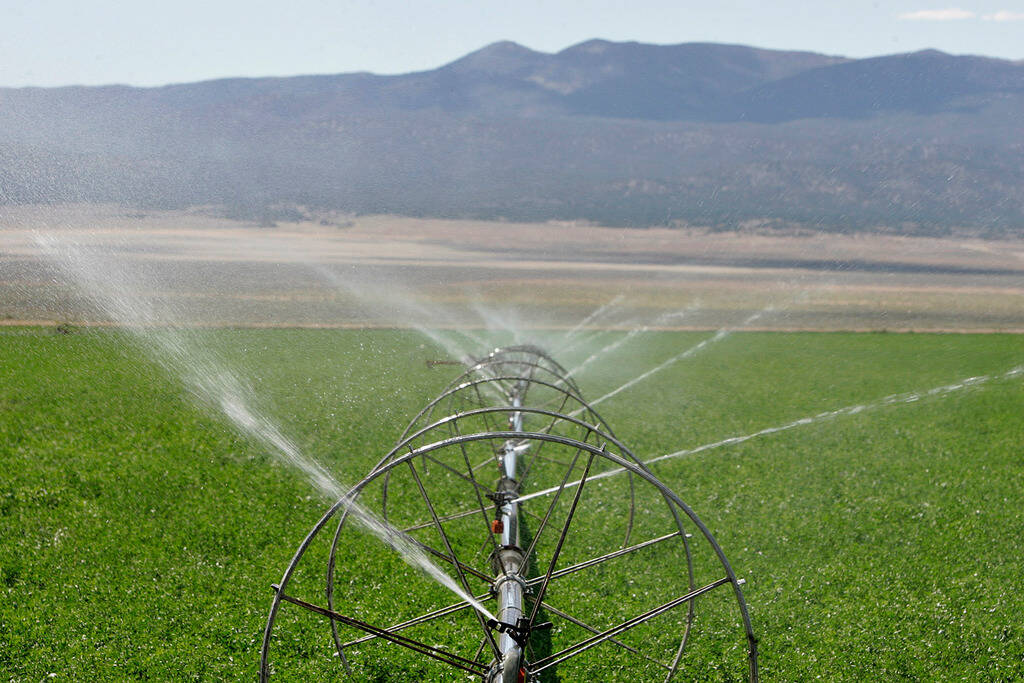Utah water project that irked Nevadans on hold
A controversial plan to pump groundwater from rural western Utah valleys that has drawn the ire of groups on both sides of the Nevada-Utah border is on hold — for now.
The Bureau of Land Management currently lists the status of the environmental review for the project as “paused,” but the government’s website offers little details about when or why the review was halted or how long the pause could last.
Paul Monroe, general manager of the Central Iron County Water Conservancy District that is pursuing the project, said the pause came after the district told the federal government that more time was needed to complete several required studies and analyses related to the project.
“We received a lot of comments for this project, and we just need more time to address those issues,” Monroe said in an interview Thursday.
That included a request from the federal agency to complete an ethnographic study as part of the environmental review, which Monroe said “was out of the blue.”
The Central Iron County Water Conservancy District, which provides water to Cedar City and the surrounding communities, has pushed for the estimated $250 million pipeline project as a way of expanding the region’s water supplies to fuel the area’s rapid growth.
Environmental concerns
The pipeline plan has faced pushback from a coalition of tribal members, ranchers and rural governments from Utah and Nevada who have argued that the expansive pipeline project would create far-reaching environmental issues spanning both states.
Kyle Roerink, executive director of Great Basin Water Network and one of the organizers of the coalition to oppose the project, said the pause shows that the Iron County water district was never fully prepared to move forward with such a massive project.
“Anytime this water provider faces any scrutiny, they crumble like a stale cookie,” Roerink said. “The top officials in Washington were putting this thing under the magnifying glass and seeing it for what it is. Pauses like this are very rare.”
Located about 170 miles northeast of Las Vegas, Cedar City gets its water from an underground aquifer in Cedar Valley. The city of about 37,000 people and its surrounding communities use about 28,000 acre-feet a year from the groundwater system, which is only capable of producing about 21,000 acre-feet annually.
The agriculture sector uses about 75 percent of that water in Cedar Valley, according to Monroe.
In 2021, Utah adopted a management plan that will roll back water rights and reduce the amount of water that can be pumped out of the Cedar Valley aquifer, with the first set of cuts scheduled to start in 2035.
‘Not just growth’
Under that plan, Monroe said, the cities in his district stand to lose about 75 percent of their water rights.
“More than half of the people who are here now would not have water,” Monroe said. “It’s not just growth. It has a lot to do with sustaining the water and the people we have here.”
The pipeline project seeks to tap into 15,000 acre-feet of water rights that the district owns in nearby Pine Valley. The district also owns rights to 11,000 acre-feet in Wah Wah Valley and has applied for another 10,000 acre-feet of rights in Hamlin Valley, but those are not included in the project under review by the BLM.
During an Iron County water district board meeting in March, Monroe told board members that he did not expect the federal government to issue a record of decision before the end of 2023.
The district’s board in the same meeting approved spending an additional $235,000 to pay a consulting firm to complete the studies that the federal agency is requiring under the review process.
Iron County still intends to move forward with the project once it completes all of the needed analyses, which Monroe said should take six to eight months.
Opponents of the project have stressed that pumping from those western Utah basins would have detrimental effects on surrounding areas, including Great Basin National Park, Fish Springs National Wildlife Refuge and large stretches of public rangelands in Nevada and Utah.
Roerink said the pause should act as a warning to the southern Utah ratepayers about the water district’s ability to manage such a project.
“We’re talking about a series of regional flow systems that have great significance throughout the Great Basin,” Roerink said. “If they couldn’t be ready for prime time when they said they were, what does this foreshadow in the future when wells start to go dry, when springs start to go dry?”
Contact Colton Lochhead at clochhead@reviewjournal.com. Follow @ColtonLochhead on Twitter.


















